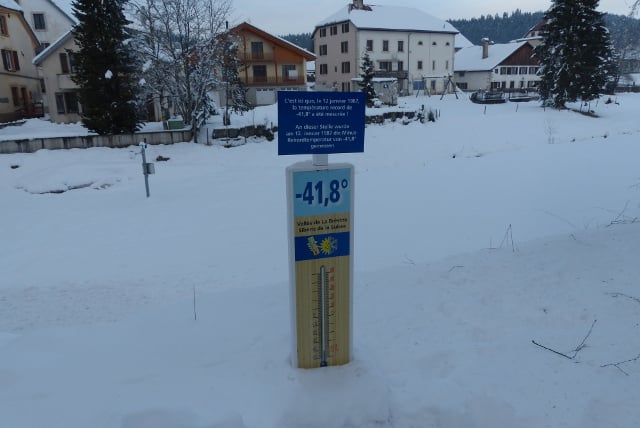WEATHER
‘Siberia of Switzerland’ too warm for cold festival
Around 1,500 people attended the annual Fête du Froid (cold festival) in La Brévine on Saturday, despite the fact that the relatively mild weather caused many of its planned attractions to be cancelled.
Published: 6 February 2017 11:56 CET

Photo: The Local
The cold festival, now in its sixth year, celebrates the area’s reputation as the chilliest place in Switzerland, after it registered a record low of -41.8C in 1987.
Due to its specific microclimate this so-called ‘Siberia of Switzerland’ regularly records extremely low temperatures in winter and has already reached -29.9C this year.
However on Saturday the weather wasn’t playing ball.
With temperatures at around 1-2 degrees and a distinct lack of snow, festival organizers were forced to cancel several planned attractions, reported news agencies, including dog sled rides, cross-country ski and snowshoe initiations and a snow sculpture activity which was replaced by wood carving.
Nevertheless, visitors still packed out the restaurants, according to organizer Vincent Matthey – if only to shelter from the strong winds that battered the area during the afternoon.
It’s the second year in a row that the village has not lived up to its Siberian reputation on the day of the festival. Last year the mercury registered a spring-like nine degrees.
Url copied to clipboard!



 Please whitelist us to continue reading.
Please whitelist us to continue reading.
Member comments